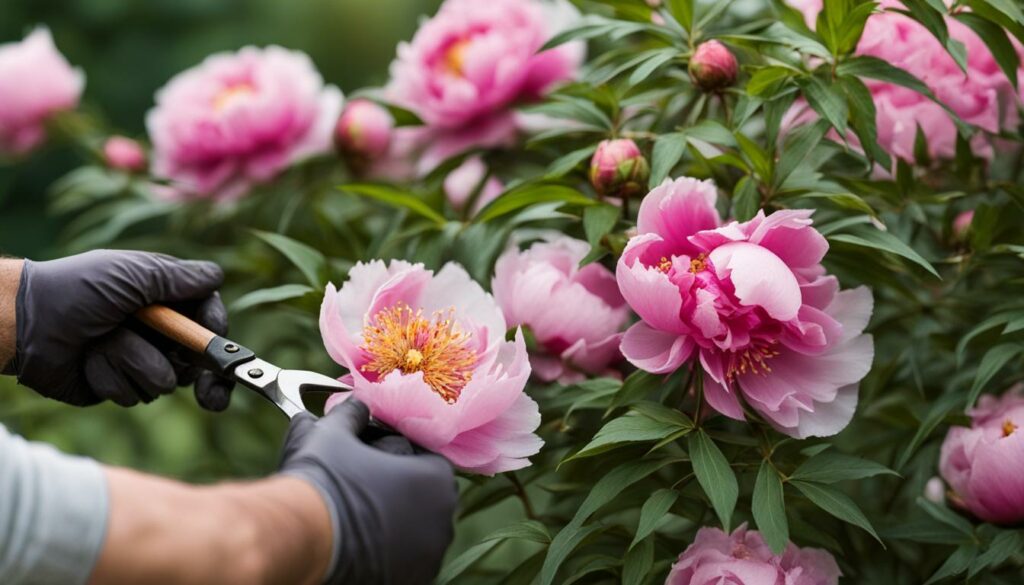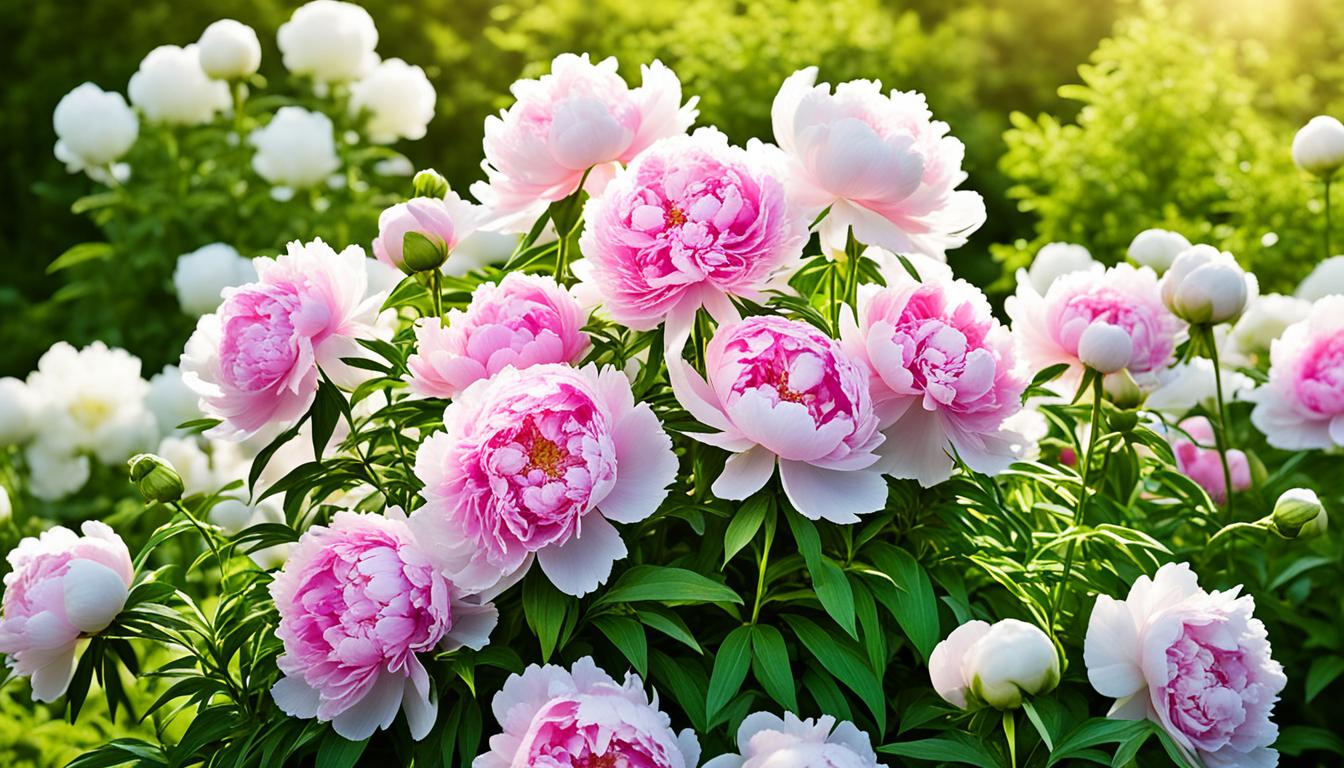There’s something undeniably magical about peonies, isn’t there? Their full, opulent petals and sweet perfume have a way of halting us in our tracks, inviting us to linger just a little longer in their presence. In the backyard where the dance of the seasons is most keenly felt, the peony emerges as a cherished protagonist, lavishly parading its beauty each spring. The gardener’s heart thrums in harmony with the earth’s rhythms when nurturing these floral treasures, tethered to an ageless craft of fostering life and vibrancy from the soil. How do we ensure that our peonies not only emerge but thrive season after season? Understanding the fine-tuned art of peony care—embracing best practices for peony care, seeking out the most valuable peony care instructions, and diligently learning how to care for peonies—is where our garden story begins.
Embarking on this floral journey means immersing ourselves in the joys and challenges that come with peony cultivation. Through shared experiences and passed-down wisdom, we can turn our gardens into a poetry of color and fragrance, where every peony tells its own tale of resilience and triumph. Let’s unfold the secrets together.
Key Takeaways
- Learn the essentials of peony care instructions for successful growth.
- Implement best practices for peony care to encourage vibrant and lush blooms.
- Understand the particular requirements of how to care for peonies in various climates and conditions.
- Discover the various peony colors and forms to enrich your garden’s diversity.
- Master the seasonal attention peonies require for a dazzling display year after year.
Peony care guide, transplanting Peonies, soil preparation for Peonies
Peonies are heralded for their show-stopping blooms and require specific nurturing to flourish. Preparing soil for peonies is fundamental, as these perennials favor a light, nutrient-rich, and well-drained environment. Achieving the perfect soil consistency begins with the incorporation of organic matter such as compost, which enhances soil structure and provides necessary nutrients.
Understanding soil requirements for peonies is crucial, including maintaining a neutral pH. If soil testing indicates an imbalance, adjust it accordingly before planting. When it comes to peony transplanting tips, timing is essential. The ideal periods for transplanting peonies are early spring, as they emerge from dormancy, or fall, when they prepare for it. It’s vital to ensure the eyes of the peony roots are planted no more than two inches beneath the surface, as deeper plantings may prevent the peony from blooming.
- Assess and amend soil with compost and pH adjustments.
- Choose a sunny location as peonies thrive with ample sunlight.
- Plant at the correct depth to encourage blooming.
- Water newly transplanted peonies regularly to establish roots.
After transplanting, consistent watering helps settle the soil around the roots, fostering a healthy start for your peony’s growth. As the plants become established, they will require less frequent watering but should never be allowed to dry out completely. Couple this care with diligent monitoring for pests and diseases to ensure that your peonies remain a vibrant and enduring asset to your garden.
Selecting the Perfect Peony Varieties
Aspiring and seasoned gardeners alike often find themselves captivated by the lush, full blossoms of peonies. Whether you’re drawn to the traditional charm of herbaceous peonies, the structural beauty of tree peonies, or the innovative allure of intersectional hybrids, knowing how to care for peonies is essential for cultivating a garden that bursts into a symphony of colors and fragrances each year.
Unlocking the Potential of Herbaceous Peonies
Herbaceous peonies are celebrated for their wide range of colors and forms, from the elegant single-flowered herbaceous peonies to the opulent double-flowered varieties. These perennials die back in winter to reemerge with vigor in the spring. Here are some tips for the Peony care guide specific to these varieties:
- Plant in well-drained soil with full to part sun exposure
- Provide support for taller varieties to prevent flower drooping
- Deadhead spent blooms to foster growth for the following season
Tree Peonies: A Sturdy and Fragrant Choice
Tree peonies care differs slightly due to their woody structure, which offers year-round interest even when the plant is not in flower. These peonies prefer a sheltered location to protect their delicate spring blooms from heavy rains and strong winds. Caring for and transplanting tree peonies successfully involves:
- Ensuring proper drainage while providing a sheltered position
- Pruning only to remove dead or damaged wood, as they bloom on old wood
- Mulching to maintain soil moisture and temperature levels

Intersectional Peonies Hybrid Vigor
Known for their robustness and prolific flowering, intersectional or Itoh peonies bring the best of both worlds. These hybrids require similar care to herbaceous peonies with added benefits such as stronger stems and sometimes a greater resistance to peony-specific diseases. For optimal Intersectional peonies care and thriving transplanting Intersectional peonies practices, follow the guidance below:
- Position in full sun with well-draining soil to encourage vibrant blooms
- Cut back the foliage in the fall to promote healthy spring growth
- Apply a balanced fertilizer in the spring as they start to grow
Selecting the right variety of peonies can influence the longevity and health of your peonies. Whether you are drawn to the romance of double-flowered herbaceous peonies or intrigued by the innovative characteristics of hybrid peonies care, adequate knowledge and care methods are paramount to foster lush, vibrant, and long-lasting blooms in your garden sanctuary.
Conclusion
As we encapsulate the world of peonies, it’s evident that the splendor of these perennials transcends simple aesthetics; peonies represent both a horticultural challenge and a badge of honor for gardeners. Following a comprehensive peony care guide can lead to a lush oasis that is as enduring as it is beautiful. Peonies require a gardener’s dedication, starting from meticulously preparing soil for peonies to mastering the transplanting peonies tips that ensure their successful establishment.
The very foundation of how to care for peonies lies in embracing their soil requirements and recognizing that each variety, from the robust tree peonies to the vibrant intersectional blooms, has its particular needs. Adhering to best practices for peony care, including proper planting depth and positioning, is key to invoking the timeless elegance that these blooms have been known to deliver. Their capacity to flourish, sometimes spanning generations, is a testament to the devotion and care applied over the years by those who tend to them.
Through precision in every step—from the initial selection to the diligent following of peonies care instructions—your garden is poised to host an annual celebration of color and fragrance. Let this be your personal Eden where the ballet of peonies, swaying with grace, marks the seasons and delights the senses. In conclusion, peonies offer not just blossoms, but an enduring legacy of natural beauty, when cultivated with knowledge and nurture as outlined in your indispensable transplanting peonies guide.








